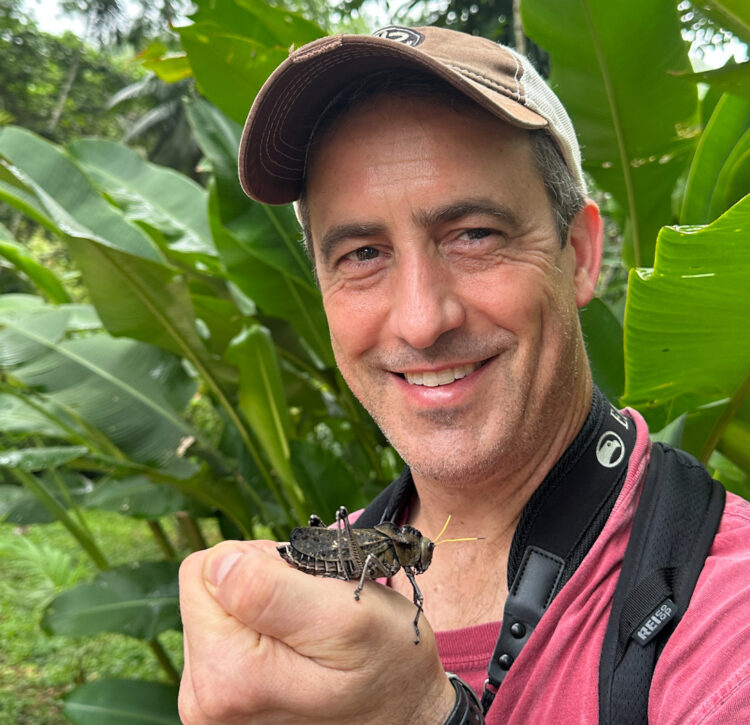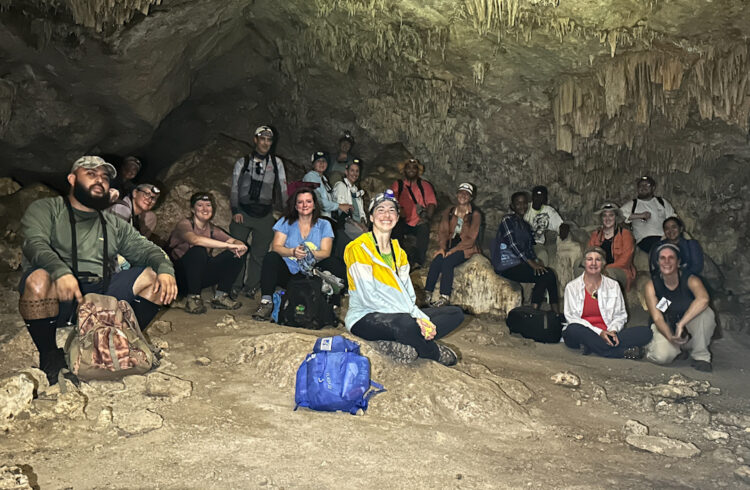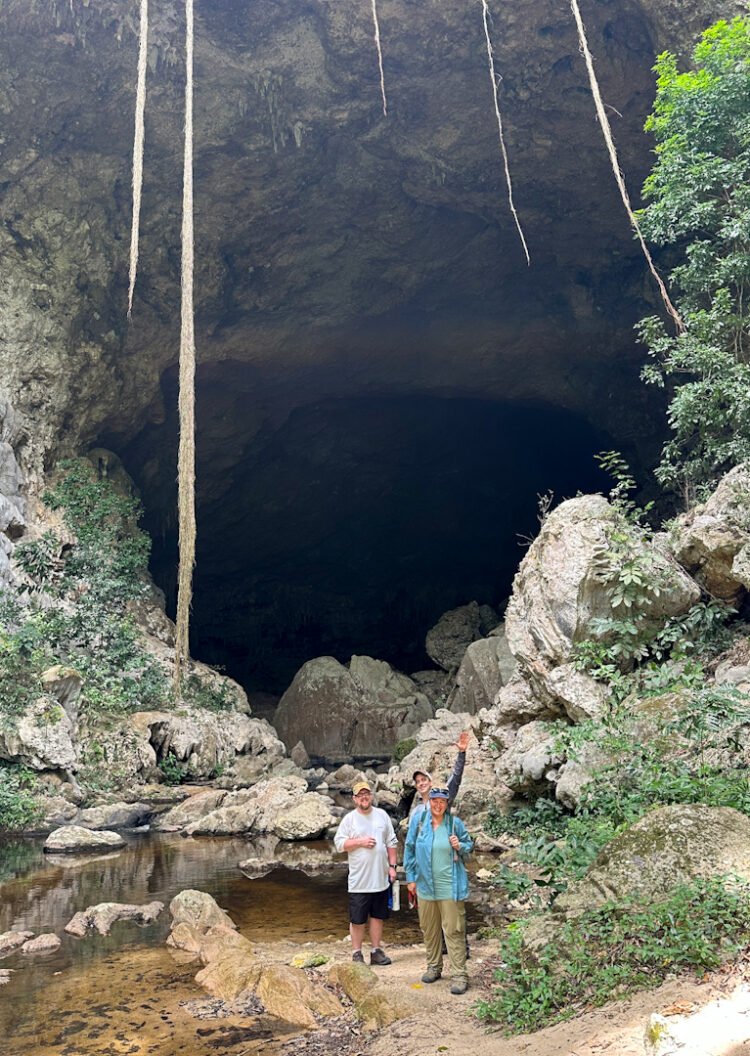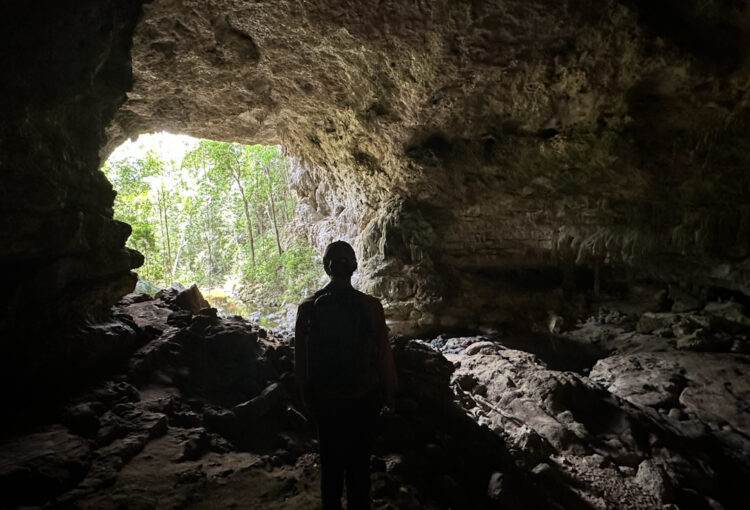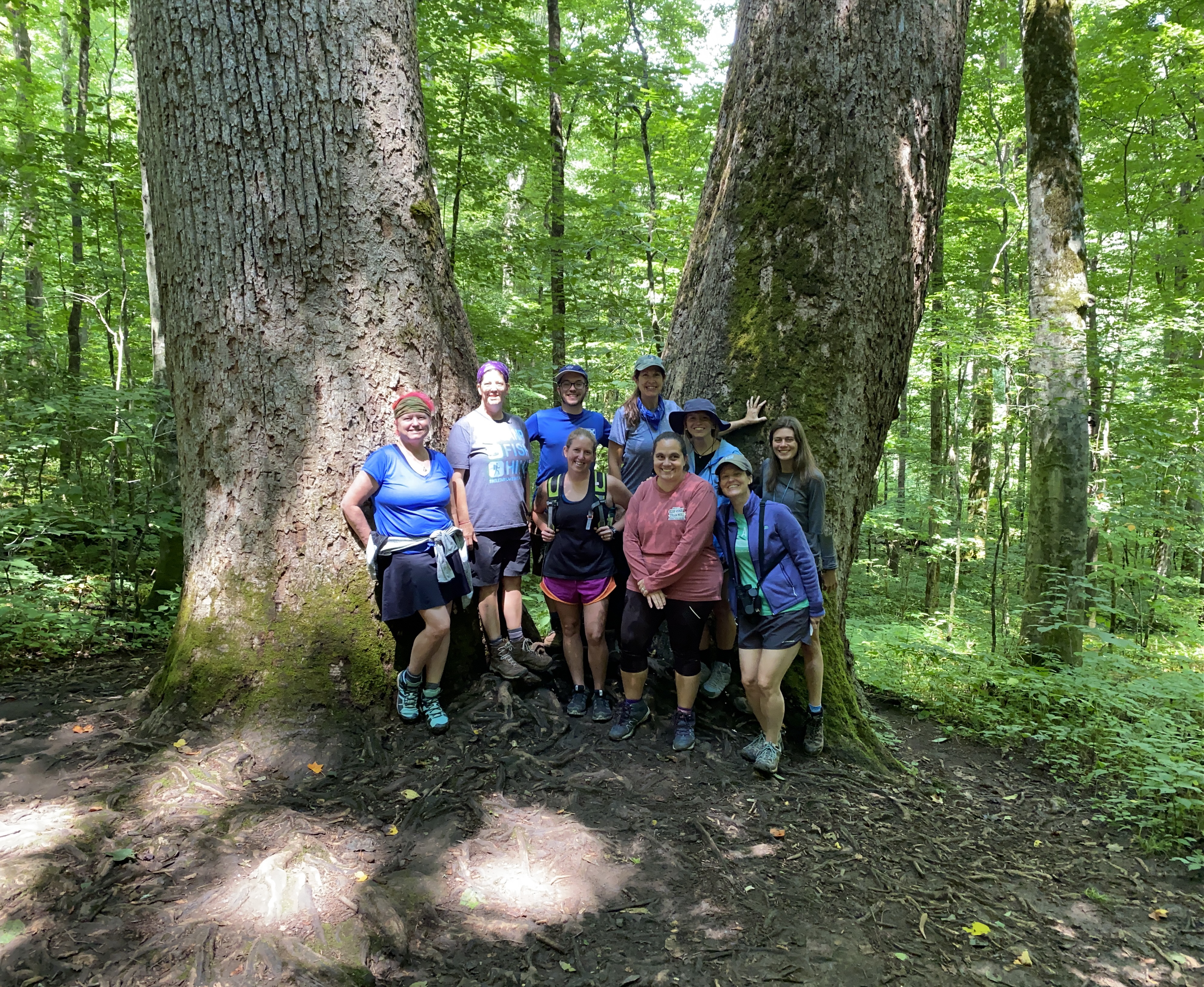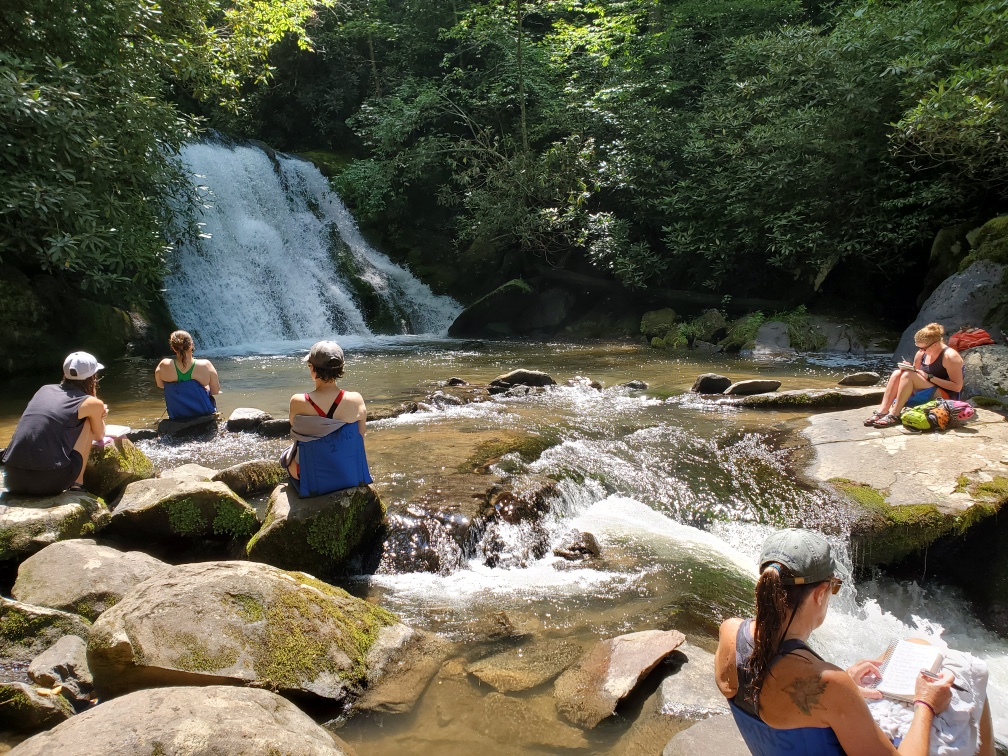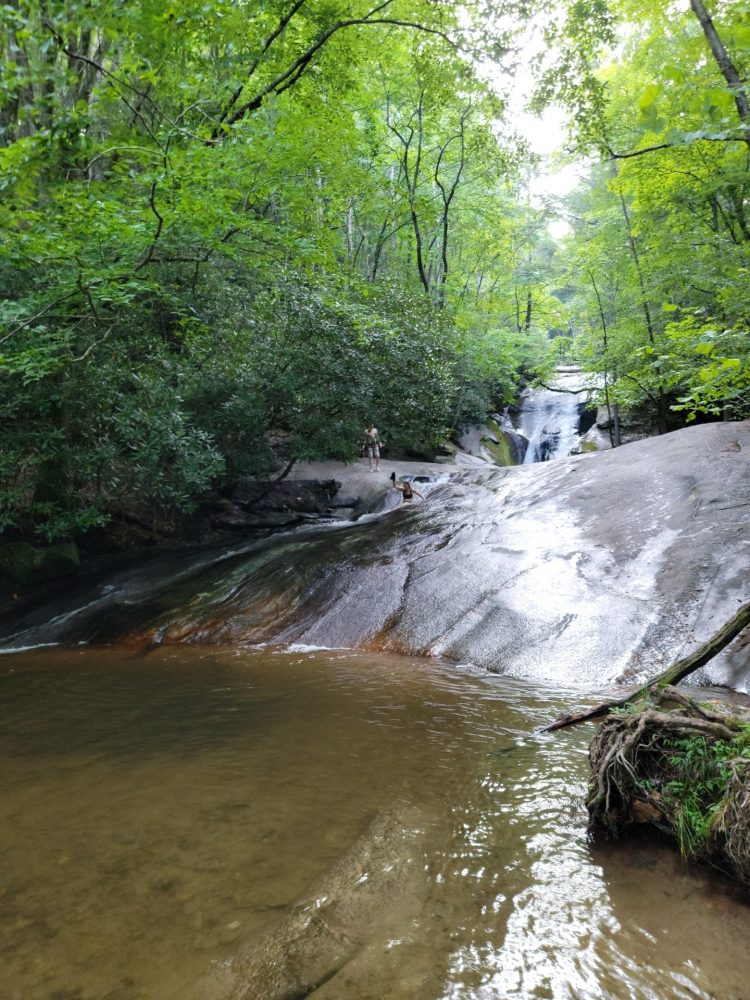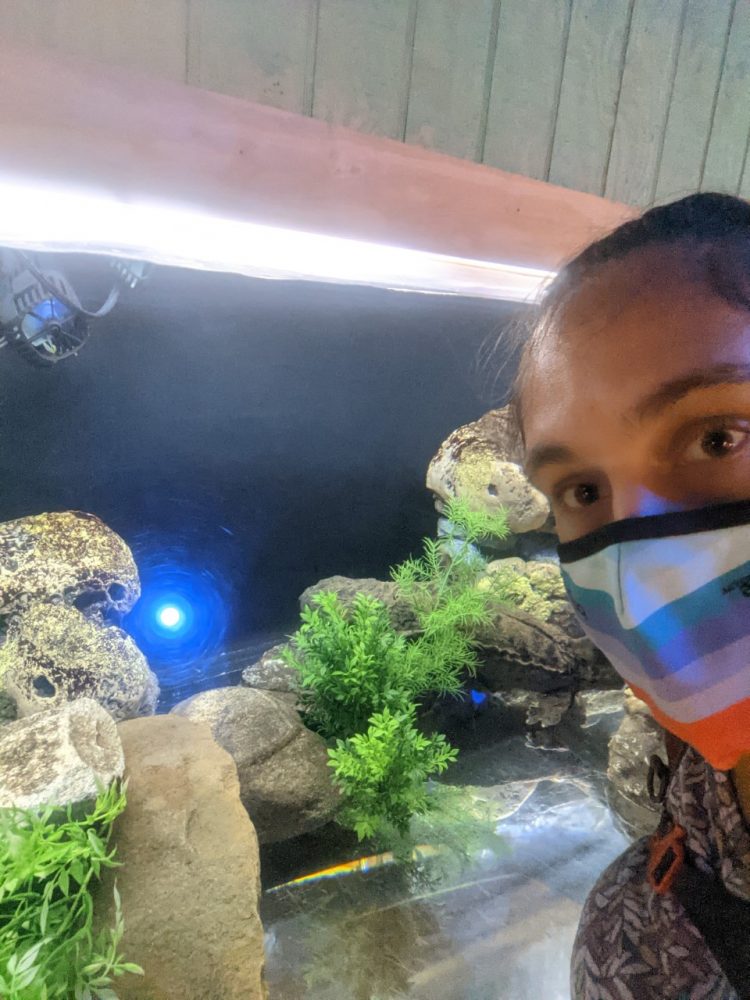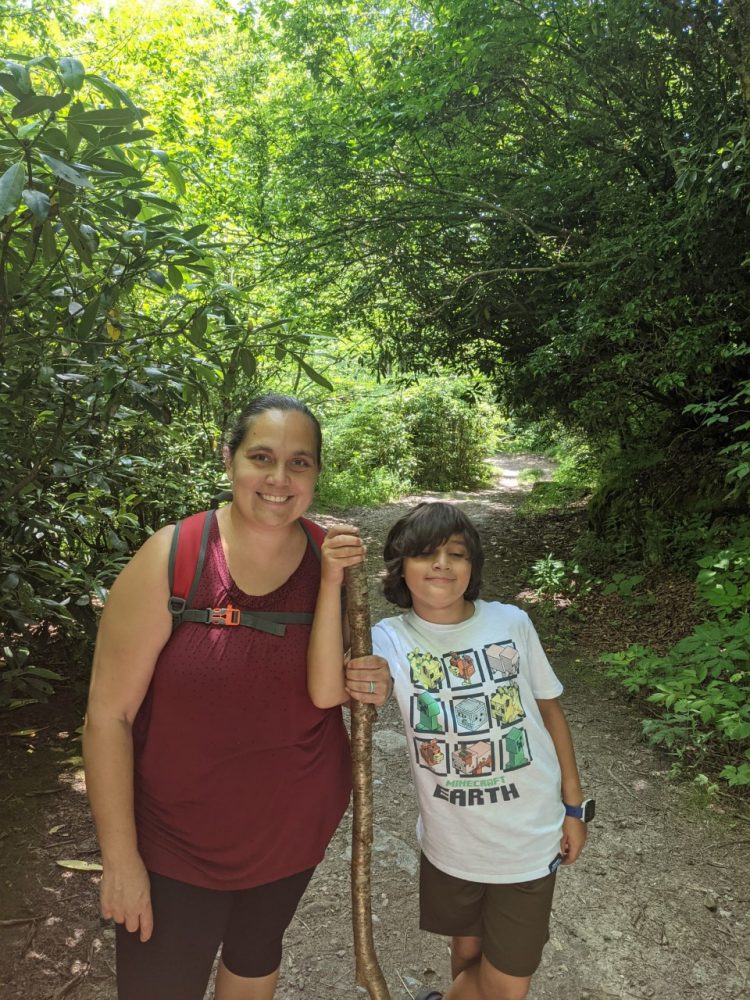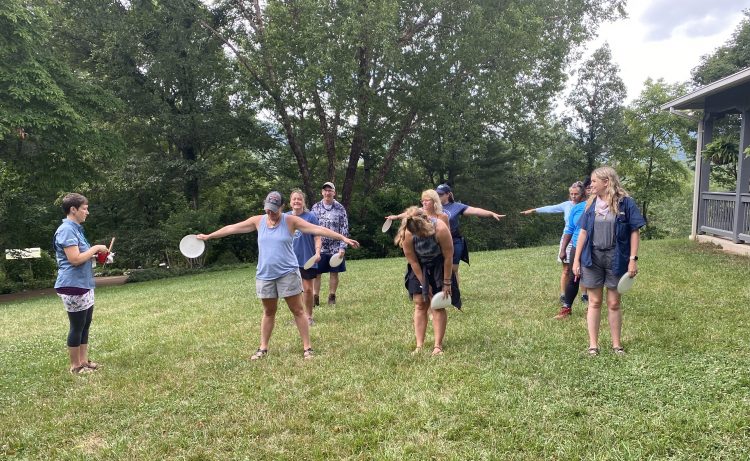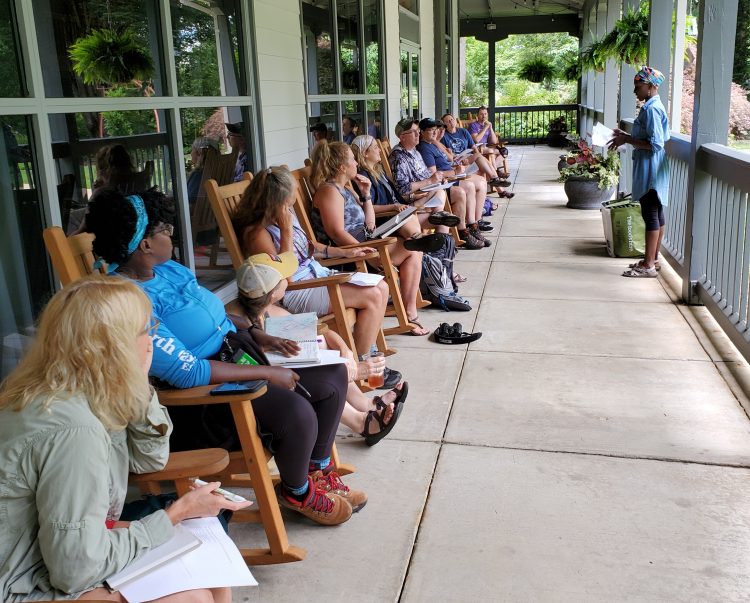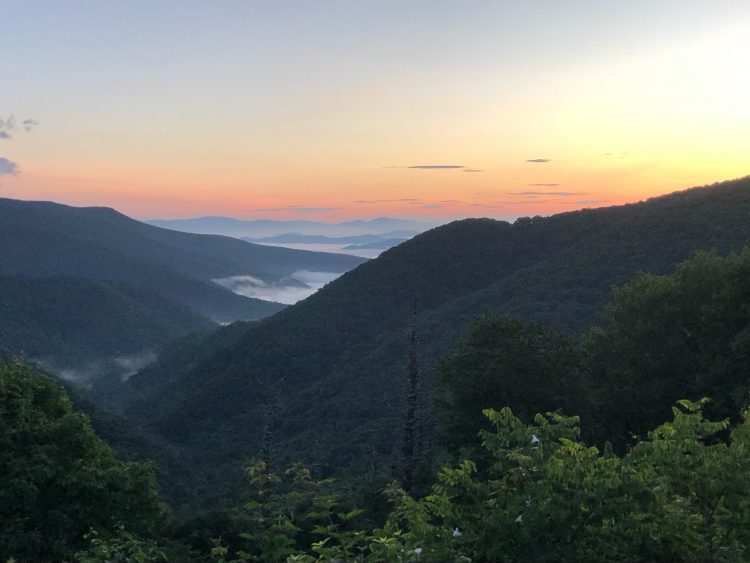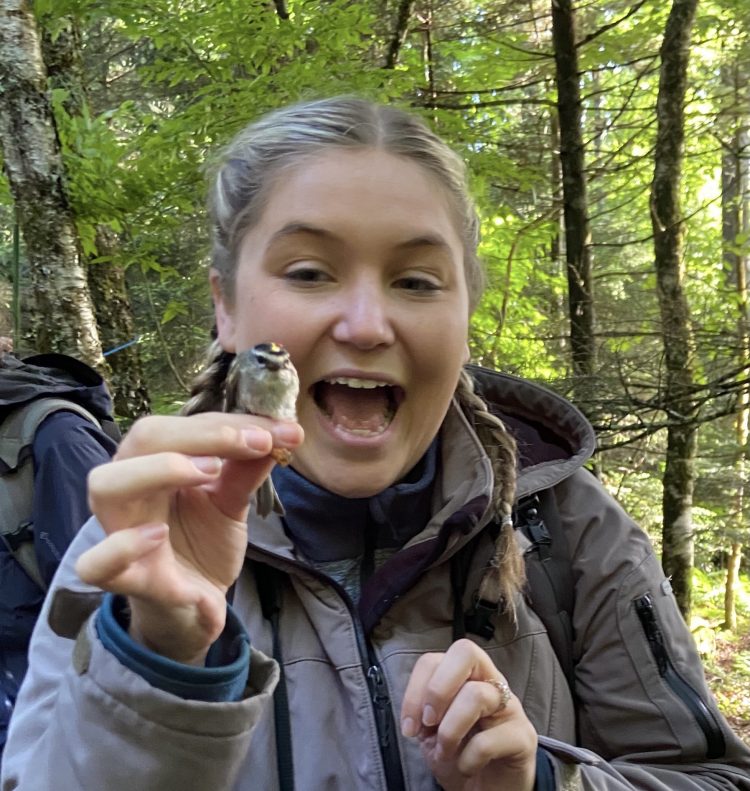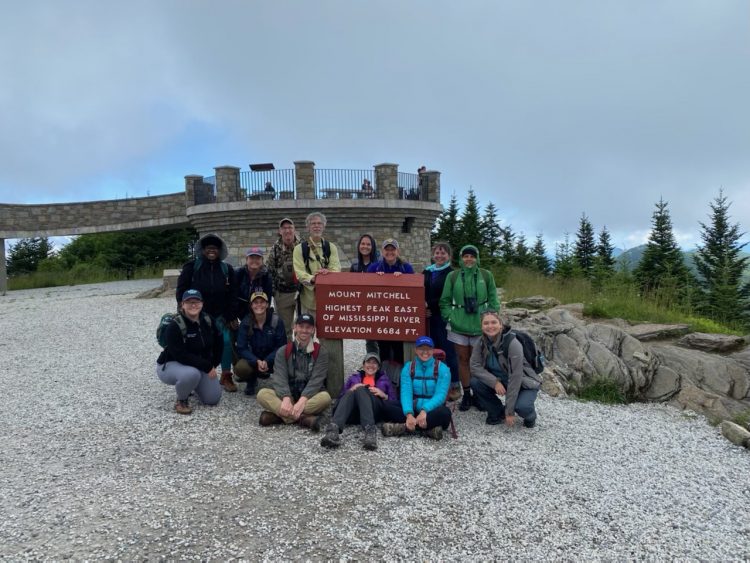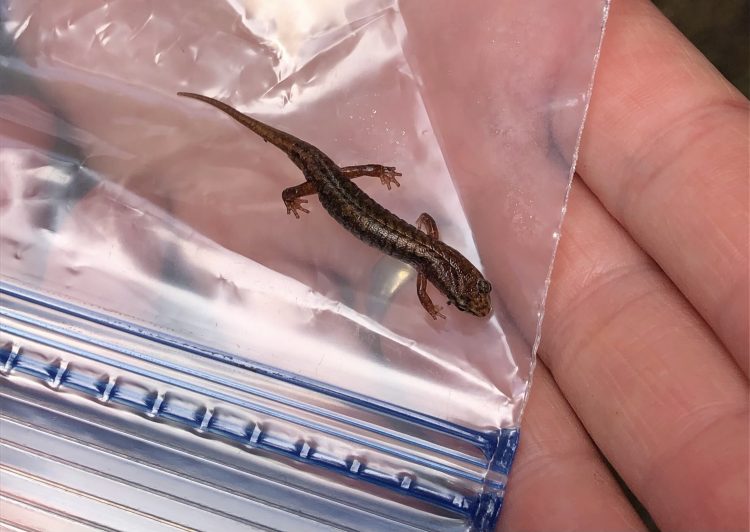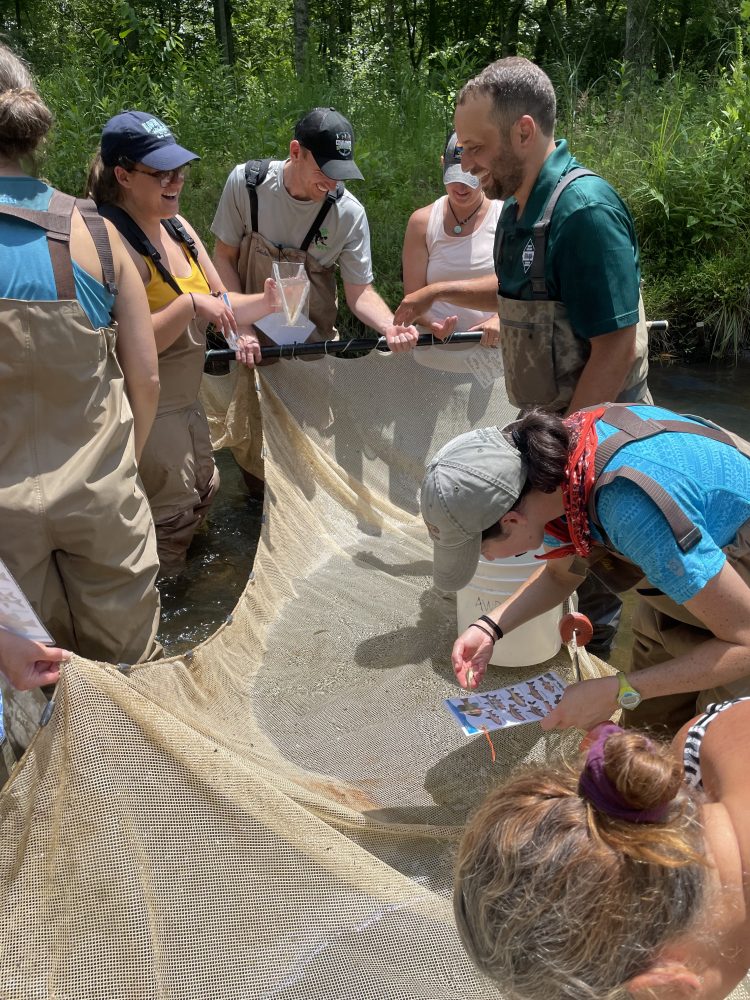“Life on the Island”
July 24, 2023 - 1 Comment
Late last night (Saturday) a small group of us gathered around Danny, a young Belizean boy who just finished eighth grade, on the pier at our Pelican Beach lodging. Danny was casting his line and a hook with a chunk of bait fish (without using a rod) into the crystal clear Caribbean water. Almost instantly his line tugged because he had hooked something. The fish fought but, as he expertly pulled the line in, we marveled at a magnificent 28” barracuda. The sleek scales shimmered in the light of our flashlights as he pulled it onto the dock to unhook it. Soon, after such a long and eventful day, we all drifted to sleep to the soothing rhythm of the Caribbean waves crashing onto the shore and reef of South Water Caye Marine Preserve.
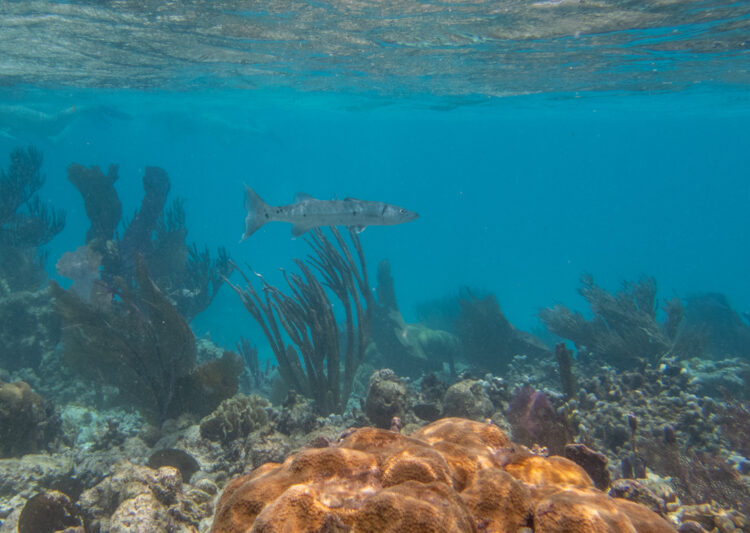
Barracuda
This morning, we were awakened by gusts of ocean breeze entering our rooms as the sun rose over our little piece of paradise. Nathan guided us around the perimeter of the island for our morning walk. We saw seashells, coral fragments, pumice, conch shells and a few friendly island dogs. Nathan demonstrated the proper way to clean and crack a coconut for the group. We continued our way back around the shore until we arrived back to our resort and our open-air dining room. We were served a traditional Belizean breakfast of eggs, bacon, cheese, fruit and fry jacks. We were eager to get out and explore the wondrous underwater world of the Belize Barrier Reef, which is the second largest in the world.
As we rode out to the reef, we first stopped at Tobacco Caye range, and Mr. Omar (our snorkel guide) briefly told us the importance of protecting the West Indian manatee, also known as the “sea cow” in Belize. We were really hoping to see one, but we had no luck. These animals are endangered because only one calf is born every two to five years and they are often harmed by boats and humans since they hang out mostly in the mangroves and shallow water. We marveled at a new fun fact: they only need to come up for air every five minutes.
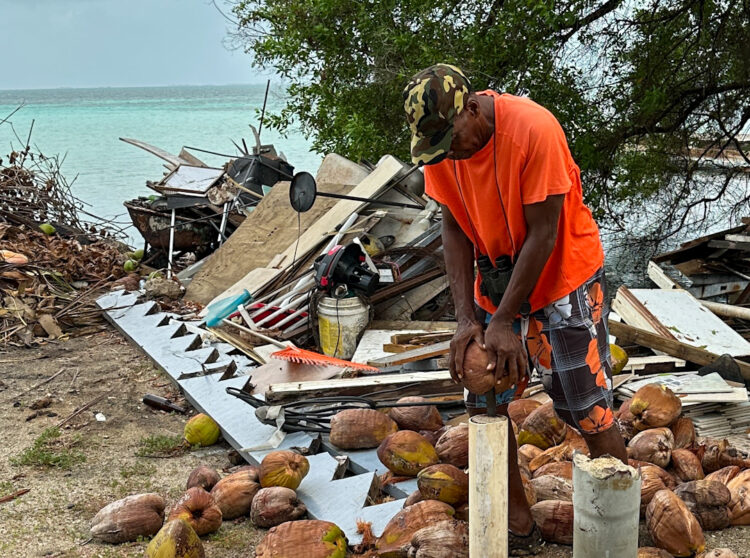
Nathan showing us how to open a coconut

Watching magnificent frigate birds and brown boobies at Man O’ War Caye
Next, we stopped to check out Man O’ War Caye (aka Bird Island) and viewed frigate birds and brown boobies in their natural habitat and nesting area on the mangroves. When we arrived at the reef, everyone put on their mask and fins, before jumping into the clear Caribbean water. We viewed many coral formations and numerous species of fish including a school of tarpon, stoplight parrotfish, and sting rays. This was a reminder of why we need to preserve and protect our valuable coral reefs.
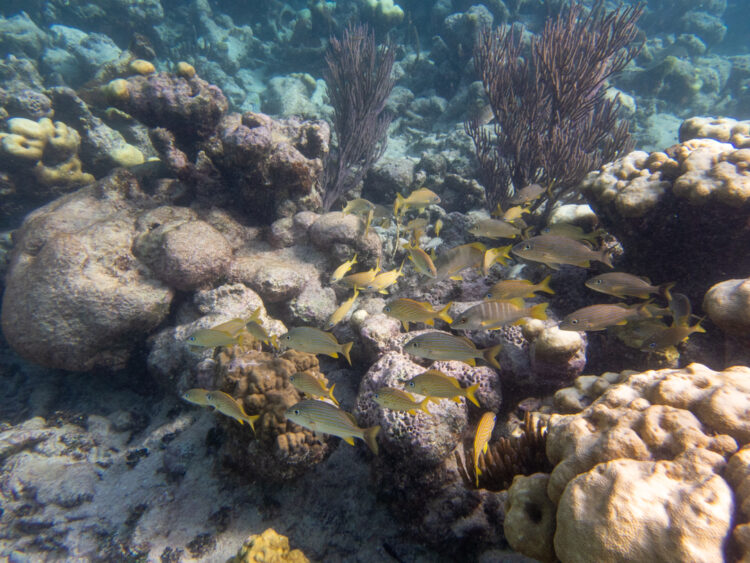
School of grunts
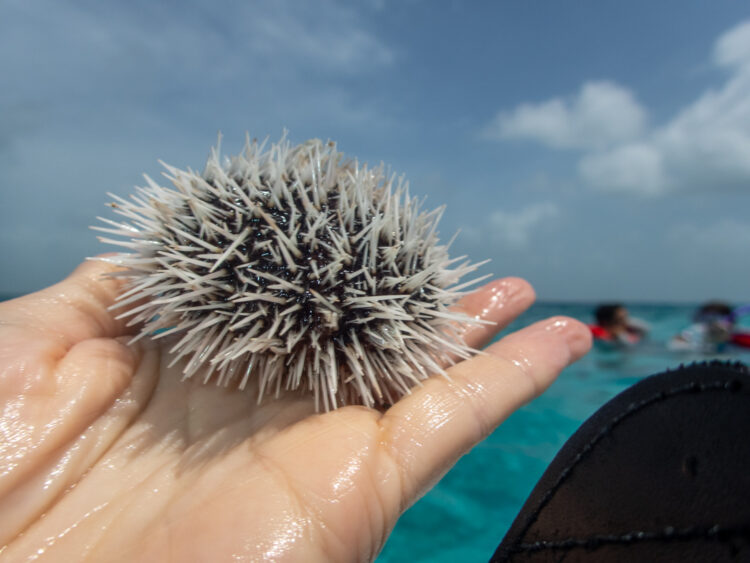
Sea urchin

Stoplight parrotfish female
After a splendid time filled with snorkeling we returned to our resort and enjoyed a traditional Belizean Sunday lunch of BBQ chicken, potato salad, rice and beans. We also got to taste Danny’s catch of barracuda from the previous night and some snapper caught by our Belizean teachers Neysy and Kaylie. We had some down time after lunch and enjoyed some rest and relaxation in the oceanside hammocks and chairs, listening to the peaceful sounds of the ocean waves. At 3:30pm, we all jumped back in the water to snorkel to the nearby reefs off our island, which were teeming with fish and beautiful coral specimens. We then met for a short group meeting. Endless laughter followed as we discussed what challenges we had encountered for our trip and what was our favorite thing we saw at the reef while snorkeling. We had dinner and a night snorkeling session to wrap up our day.

Group meeting

